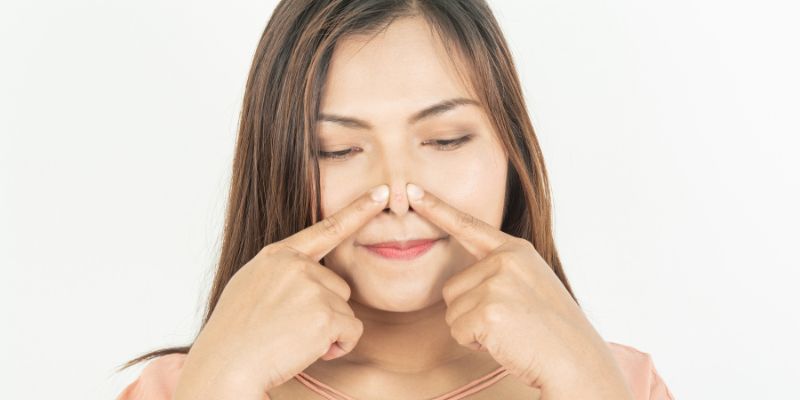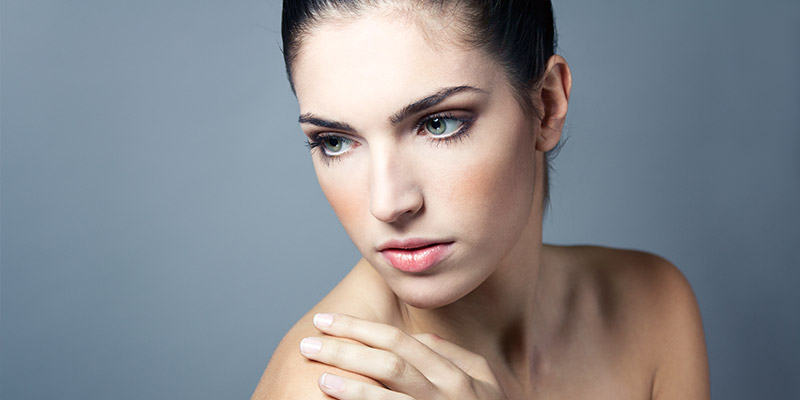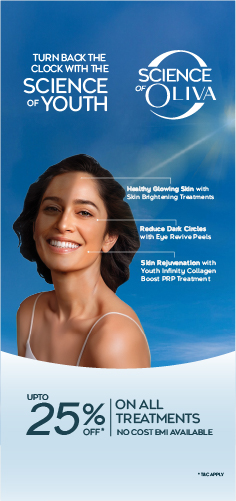How To Get Rid Of Fungal Acne?
If your stubborn acne is not clearing up with conventional treatments, it is possible that it is fungal acne. It is a condition distinct from the common acne type, acne vulgaris, and thus requires expert diagnosis and specialised fungal acne treatment. Understanding what causes fungal acne, its symptoms, and the best fungal acne treatments is crucial for effective management of the condition. This article provides information about how to get rid of fungal acne, the best fungal acne treatments and if fungal acne treatments at home really work. Discover expert advice on all things related to fungal acne and learn how to get your skin clear and healthy again.
In This Article

What is Fungal Acne?
Fungal acne appears when Malassezia fungus infects your skin. Dermatologists also refer to this condition as Malassezia folliculitis or Pityrosporum folliculitis.
What does Fungal Acne Look Like?
Fungal acne looks like small red bumps on the skin that are mostly itchy. This type of acne may grow bigger in size and shape and may form pus-filled whiteheads.[1]
Fungal Acne vs Acne Vulgaris
Here are the differences between fungal acne and acne vulgaris:
| Fungal Acne | Acne Vulgaris |
| Caused due to yeast overgrowth | Caused due to clogged pores |
| Causes skin itching | No itching |
| Not treatable with antibiotics | Treatable with antibiotics |
| Occurs on the chest, forehead and back | Face, chest and neck |
| These pus-filled pimples are more or less the same size | Pimples are of varying size |
| They appear as clusters | They appear as individual pimples on the skin |
Additionally, fungal acne may lead to dandruff and psoriasis.
It is critical to note that acne vulgaris and fungal acne are two distinct conditions, thus, require different treatments. There is also a high chance that regular acne treatments could worsen fungal acne.
Causes of Fungal Acne
While Malassezia yeast is commonly found on the skin, the problem occurs when it enters the skin and gets trapped in clogged hair follicles. This causes infection on the skin surface, known as fungal acne.
Some reasons that are blocking your hair follicles:
- Aggressive rubbing of the skin
- Shaving, waxing, tweezing
- Snugged clothing
- Regular use of hot tubs
- Letting your skin stay hot and damp
Overuse of antibiotics also causes fungal acne, as they kill both good and bad bacteria in the body. Yeast and bacteria both are present on our skin. Taking antibiotics decreases the number of bacteria and the yeast can cause fungal acne to spread rapidly. Further, using medications that suppress the immune system hinders the natural process of controlling the growth of yeast in the body, resulting in fungal acne.
Symptoms of Fungal Acne
Some of the most common symptoms of fungal acne include the sudden appearance of plenty of small pimples that are red in color, like rash on the skin. The pimples may have a reddish outline and they generally appear in clusters.
When infected with fungal acne, the skin feels:
- A burning sensation
- Itchy
- Painful
Fungal acne can show up anywhere on the body, but it is most common around the:
- Forehead
- Chin
- Neck
- Shoulders
- Chest
- Upper arms
- Upper back
How To Get Rid Of Fungal Acne?
Wondering how to treat fungal acne on the face naturally? Or if there are any oral medications that can help heal fungal acne? Various methods and treatments, including OTC products and home remedies, are popular that can help treat fungal acne and provide relief in related skin concerns, such as itching, redness and burning sensation on acne-prone area.
The following sections of this article contain all the information about fungal acne you need.
EXPERT ADVICE
- Every individual’s skin is unique, and their skin concerns occur for various reasons. A doctor will identify the cause and give you the necessary treatment.
- Your dermatologist may advise oral Azole antifungal medications, such as Fluconazole, for severe cases. They may combine these medications with chemical peels, which exfoliate the skin and help minimise sebum production, giving you good results.
- Make sure you follow the doctor’s prescription strictly for the best results and avoid side effects.
- Malassezia can be persistent and difficult to get rid of completely. Antifungal treatments also take several weeks to work, so you must be consistent. You can reduce the chance of recurrence with regular use of OTC antifungal shampoos.
Home Remedies for Fungal Acne
The following are some home ingredients known to offer relief from fungal acne:
-
Honey:
It contains hydrogen peroxide, which is an effective ingredient in fighting off fungal and yeast skin infections, including fungal acne. Dip a cotton ball in honey, gently dab it over fungal acne and leave it for 15-20 mins and wash off the area. Repeating the step twice a day can reduce acne.
-
Tea Tree Oil:
Sourced from melaleuca alternifolia plant, tea tree oil is antifungal and antiseptic in nature. It is capable of fighting Malassezia and soothes the skin.
-
Aloe Vera:
As per research [2], aloe vera has several biologically active constituents, including vitamins, minerals, saccharides, amino acids, anthraquinones, enzymes, lignins, saponins, and salicylic acids. Aloe vera, being a good anti-inflammatory agent, prevents further fungal acne breakout and provides relief from burning sensation and redness.
-
Apple Cider Vinegar:
Owing to its astringent and exfoliating properties, apple cider vinegar is known to remove excess oil and debris from skin infected with fungal acne. It restores and balances out the same pH level across the skin. Its acidic nature provides a chemical peeling effect on skin and helps to unclog blocked pores on fungal-acne affected area.
-
Turmeric:
Rich with anti-inflammatory and antifungal properties, turmeric inhibits the growth of fungi and other infections. It also soothes down the skin inflammation. Applying turmeric paste over fungal acne can relax itchiness and hinder further growth.
-
Coconut Oil:
Coconut oil is packed with medium-chain fatty acids, also known as MCFAs. These MCFAs have strong antimicrobial effects and are useful for killing harmful bacteria, fungi and virus anywhere on the skin. Therefore, coconut oil can provide relief in reduction of fungal acne.
-
Garlic:
Some studies [3] show that garlic in any form (raw, dried, powdered, and garlic extract oil) has anti-inflammatory properties. It can kill harmful infection on the skin and clear it up.
-
Neem Tree:
The neem tree is often referred to as ‘the village pharmacy’ in India. Everything including bark, wood, sap, leaves, flowers, fruits, seeds, and oil of the neem tree have medicinal properties.[4] It is an effective treatment for fungal acne.
-
Yoghurt:
It is a very good source of good bacteria. Eating yoghurt or other probiotics may help the body fight yeast and fungal infections. Therefore, consuming yoghurt is known to treat fungal acne.
-
Oregano Oil:
It is known to provide promising results for fighting fungal acne. Due to its anti-inflammatory properties, it is beneficial to reduce inflammation associated with fungal acne, leading to visible improvement in the condition of acne-prone skin.
NOTE:
The efficacy of these home remedies is not scientifically proven and all evidence is anecdotal. Please remember that every individual’s skin type is different and thus, the impact of any treatment also varies. We strictly recommend that you visit a qualified dermatologist and get a consultation before trying out any home remedies as it may worsen your skin condition.
Topical And Oral Medications To Treat Fungal Acne:
The following are various topical and oral medications that can help treat fungal acne:
-
Ketoconazole Cream, Shampoo, And Tablets (Extina):
Ketoconazole has antifungal properties and is used to treat conditions like athlete’s foot, ringworm, dandruff, and fungal acne. It is an effective medication for killing fungus and other infectious microbes by damaging its outer protective layer. Ketoconazole medication is available in various forms, such as cream, shampoo and tablets. You can directly apply the cream over acne-prone skin or take oral Ketoconazole medication.
-
Clotrimazole Cream (Mycelex, Lotrimin AF):
It is one of the best OTC products that can be used to treat certain kinds of fungal or yeast infections of the skin. Fungal acne gets produced due to excess yeast growth and Clotrimazole kills yeast infection leading to reduction in acne. Clotrimazole is a topical medication that is for external use only.
-
Ciclopirox Cream And Shampoo (Loprox, Penlac):
Ciclopirox is one of the known medications from antifungal medication group. It prevents the further growth of fungus on the infected skin. Ciclopirox topical cream is used to treat various skin infections such as athlete’s foot, jock itch, ringworm, yeast infections including fungal acne. Whereas, Ciclopirox in shampoo form is an ideal medication for seborrheic dermatitis, an inflammatory skin condition of the scalp.
-
Fluconazole Tablets (Diflucan):
It prevents and treats fungal infections on various parts of the body mouth, throat, esophagus, lungs, bladder, and genital area. The medication has shown promising results for treating fungal acne.
-
Itraconazole Tablets (Sporanox):
It is another effective medication from antifungal family that helps in treatment and management of fungal infections in body. It works by slowing down the production of yeast.
When To Visit A Dermatologist For Fungal Acne?
Ideally, you should visit a dermatologist as soon as you notice clustered, itchy pimples. But do not delay your consultation if they persist for more than 2 weeks.
How To Prevent Fungal Acne?
You may not be able to avoid fungal acne entirely, but taking certain precautions can reduce the chance of its occurrence:
-
Always Wear Breathable Fabrics:
Go for fabrics that allow proper airflow and absorb sweat and moisture from the skin. It becomes more important for those living in warm and humid climates.
-
Take A Shower If/When You Sweat:
Do not let sweat be trapped inside your clothes. This gives a room for infections to grow. If after shopping, exercise or any day-to-day activity makes you sweaty – taking a shower will reduce the risk of fungal acne.
-
Change Out Of Sweaty/Wet Clothes Quickly:
Do not stay in sweaty and damp clothes, as the moisture gives a chance for yeast and other harmful microbes to grow. Change damp clothes as quickly as possible.
-
Use Antifungal Shampoo Or Body Wash:
Go for antifungal shampoo and body wash if you are someone who is at risk of fungal infections.
-
Maintain A Clean Skin Routine:
Keep your skin clean even if you are not going out. Use a gentle cleanser and wash your face, arms and exposed skin at least twice a day. Doing so will remove any excess oil from the skin.
-
Eat A Balanced Diet:
Avoid or limit the intake of sugary and processed foods as much as possible. Unhealthy food habits can hinder the immune system’s ability to fight
-
Exfoliate Regularly:
Regular exfoliation of skin can unclog closed pores and remove dead cells from the skin, preventing any infection to grow.
-
Change Bedsheets And Pillow Covers Regularly:
Bedsheets and pillow covers often contain dust and pollutants and may block skin pores. Therefore, make it a habit to change them at regular intervals.
-
Avoid Going To Unhygienic Hot Tubs And Pools:
Always know that dirty pools and hot tubs will be a breeding ground for viruses and fungus. If you unsure about how well the pools or hot tubs are maintained, strictly avoid using them.
-
Avoid Sharing Personal Items:
Sharing personal items, such as combs, towel or makeup products can transfer yeast and bacteria from one person to another. Avoid sharing personal items to mitigate the risk of fungal acne.
EXPERT ADVICE
One of the most effective treatments for fungal acne is to reduce the sebum build-up. An oil control facewash and mild non-comedogenic moisturiser can help manage fungal acne.
Takeaway
In this article, we discussed various factors that have a potential to trigger the occurrence of fungal acne on the skin. We also provided various solutions for treating fungal acne including OTC products and home remedies. But remember, the factors contributing to fungal acne could be different for each individual and each skin type may need a specific kind of solution. Therefore, we recommend you visit a dermatologist. Click here to book an appointment or call us at 📞82978 82978 we would be happy to assist you.
Frequently Asked Questions On Fungal Acne
Ingredients like benzoyl peroxide and coconut oil may worsen fungal acne. It is best to check this with your dermatologist to avoid the risk of worsening your fungal acne.
While there is anecdotal evidence that ingredients like aloe vera, apple cider vinegar, tea tree oil, etc, can help with fungal acne, they are not scientifically proven. It also depends on your skin type and how receptive it is to a specific ingredient. Thus, it is best to consult a dermatologist.
It can persist for years if you do not treat the fungal infection causing the acne.
Avoid touching and popping any type of pimples as they can spread and become more severe. You will also risk scarring your skin, which can be challenging to treat.
Yes, despite the care and use of oral and topical medication – fungal acne can come back as a result of extra yeast trapped in the hair follicle. It is best to consult a dermatologist to help prevent it from reoccurring.
Yes, fungal acne is treatable. With proper diagnosis of their severity and suitable treatment, it will likely go away in short period of time.
Moisturising the skin and keeping it hydrated is a good skin-care practice. However, for fungal acne, you must choose oil-free moisturisers as they can clog your pores, further aggravating fungal and yeast infection. Gel or water-based moisturisers can help. But it is best if you take this advice from a dermatologist.
Both sugary and processed foods are thriving agents for yeast.
Salicylic acid helps unclog pores, so it can effectively reduce fungal acne. But check with a dermatologist to determine if it suits your skin.
Like other types of acne, fungal acne can also leave behind rigid scars, dark spots and pits. There are a range of effective treatments in dermatology that can solve this problem.
Go for a face wash that has ingredients with anti-clogging properties, such as salicylic acid and niacinamide. These work great for acne-prone skin, including fungal acne skin concern.
Yeast thrives on oily and sweaty skin than dry skin. Therefore, people with oily skin are more vulnerable to fungal acne.
Vitamin C can reduce fungal acne lesions as it is a great anti-oxidant that can control oil production.
Excess consumption of dairy products, including milk, can trigger yeast production. It is best to consume them in moderation.
Hormonal acne occurs due to changes in hormonal cycles, owing to puberty, menstruation and pregnancy, while fungal acne occurs due to excess yeast growth.
Salicylic acid works best for fungal acne as it helps clear out the clogged pores.
No, steaming can aggravate the concern. Warm, humid and moist weather conditions cause yeast to breed faster.
Lemon is antifungal and is a rich source of citric acid. It works well against yeast and causes a reduction in infection. But you need to check its suitability with a dermatologist.
Fungal acne mostly appears in clusters as red colored itchy small bumps. When these become a bit bigger, they can appear like white or yellow pus-filled pockets.
Yes, it does grow and spread as the yeast infection grows.
Hyaluronic acid is beneficial for skin concerns, such as ageing, dehydration or dryness. It may not work for reduction of fungal acne.Is Niacinamide Good For Fungal Acne?
Yes, due to its anti-inflammatory and skin-nourishing properties, niacinamide is a good option to treat itchiness and redness from fungal acne. Consult a dermatologist to ensure it works for your skin.
Though curd has good bacteria, there is no scientific proof that it can help with fungal acne. It is best to seek medical help to treat your concern.










